The Difference Between IFAK, AFAK, and MFAK
(Updated August 2024)
Traditional medical kits are good to have in your home, car, or gym bag. However, if you are on a tactical team, participate in shooting sports, or spend any amount of time around firearms, weapons, and so forth, you may want to consider medical kits designed to treat traumatic injuries and severe bleeding. There are now small kits that attach to your belt, vest, or that fits in a pouch, but will still hold essential life-saving devices.
When assembling your tactical gear load-outs, you will typically think vest, belts, helmets, and firearms. But a well-equipped first aid kit can save your life just as easily as any ballistic protection gear and should be considered essential.
We'll go over the differences between various tactical first aid kits (IFAK, AFAK, and MFAK) and explain the essentials you should be sure to have in your kit.

Read on to learn the essential facts about the different kinds of first aid kits and what they offer.
MILITARY FIRST AID KITS: ESSENTIAL WHEREVER YOU GO
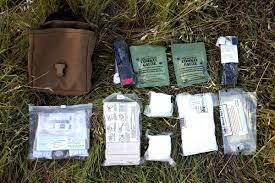
Each kit has its own pros and cons, so the majority of this article will talk about the use and application of an individual first aid kit. However, a kit overview and comparison of IFAK vs AFAK is vital to get started.
KIT OVERVIEW AND COMPARISON
There are two basic tactical first aid kits: IFAK and AFAK. Each varies in its contents, the items contained are based on the requirements and situation of its carrier.
Most come in an easy-to-carry pouch, holding all the important equipment you need.
IFAK - INDIVIDUAL FIRST AID KIT
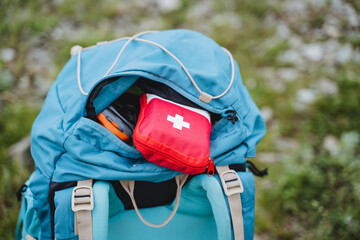
Individual First Aid Kit (IFAK) is a vital tool designed to assist individuals in treating trauma events, including severe cuts or gunshot wounds (GSW). These kits contain essential materials that are crucial for controlling bleeding and providing initial medical treatment before accessing professional medical care.
One reputable IFAK option is the North American Rescue (NAR) Solo Med Kit. It offers a comprehensive set of life-saving supplies, including bandages, chest seals, tourniquets, and other essential medical devices.
This kit is designed to empower individuals to respond effectively to emergency situations and prepare the wounded for further medical attention.
Check out the North American Rescue (NAR) Solo Med Kit
AFAK - ADVANCED FIRST AID KIT
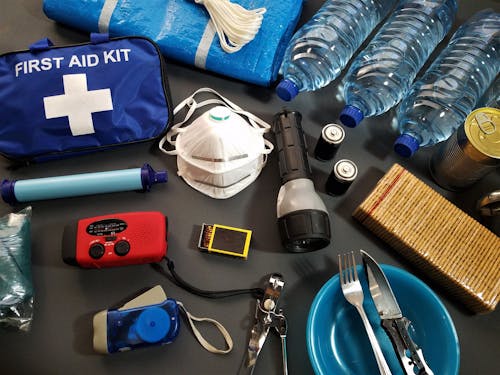
Advanced First Aid Kits (AFAK) have all the necessary materials and equipment in an IFAK but have additional components available to use for immediate medical treatment.
AFAKs may have particular types of machinery like defibrillators, plaster casts for severe fractures, life-saving medications, and advanced airway kits. Some kits even have the equipment to help people with specific medical conditions. For example, my partner has an inhaler in his AFAK as well as other airway devices. I keep additional tourniquets in my kit.
IFAK VS AFAK: THE DIFFERENCE BETWEEN IFAK AND AFAK
IFAK are basic medical kits. Practically anyone can be trained on the proper way to use an IFAK.
An AFAK on the other hand is more advanced. You can customize your first aid kit and AFAK by purchasing IVs, advanced airway tools, NARCAN, an additional tourniquet, a chest seal, and other gear that may increase your survival rate in the event of severe bleeding.
Both a first aid kit, AFAK or IFAK, can be attached to your duty belt, battle belt, or bulletproof vest. Most are small bags that contains one pouch.
MFAK - MULTIPLE FIRST AID KIT

A multi-first aid kit (MFAK) is not an individual first aid kit. It can be used on multiple people and typically does not attach to your tactical gear. Rather than being a giant pouch, like an IFAK or AFAK, an MFAK will be a large bag or box. It will look like traditional medical kits, however, it has items that will be better for traumatic injuries.
Comparing IFAK, AFAK, and MFAK Kits: Choosing the Right First Aid Solution
In emergency situations, having the right first aid kit can make a critical difference in providing prompt and effective medical care. There are several types of first aid kits available, each designed for specific purposes and levels of medical intervention.
This comparison table provides an overview of three commonly used kits: the Individual First Aid Kit (IFAK), Advanced First Aid Kit (AFAK), and Multi-Functional First Aid Kit (MFAK).
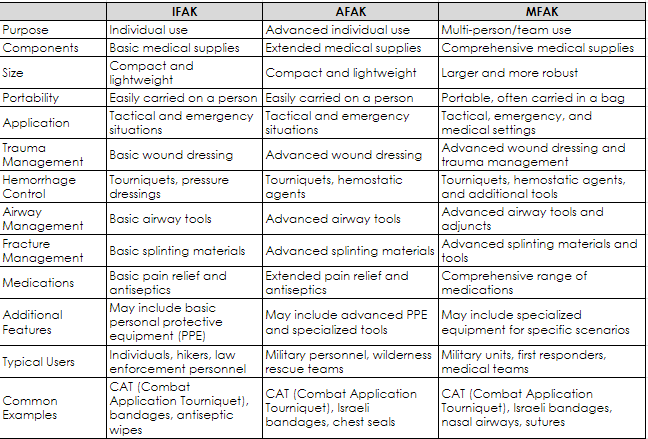
HOW ARE IFAKS, AFAKS, OR MFAKS DIFFERENT FROM NORMAL FIRST AID KITS?

Standard first aid kits are designed to address minor injuries such as superficial cuts, scrapes, and bumps that are typically non-life threatening. While they serve a purpose and are better than having no medical supplies at all, they may not be suitable for tactical or high-risk situations.
To put it simply, a regular first aid kit is intended for individuals who encounter accidental injuries. On the other hand, IFAKs (Individual First Aid Kits), AFAKs (Advanced First Aid Kits), or MFAKs (Mini First Aid Kits) are specifically tailored for those who willingly put themselves in harm's way, such as tactical or combat scenarios. These specialized kits provide a higher level of medical capabilities to address more severe injuries and life-threatening situations.
WHAT'S INSIDE THE IFAK, AFAK, AND MFAK KITS?

A standard first aid kit typically includes basic supplies like band-aids, a cleaning solution, basic bandages, cotton, and simple wound-cleaning components. However, in more specialized situations, such as on the battlefield or during missions, individual first aid kits (IFAKs), advanced individual first aid kits (AFAKs), and multi-mission aid bags (MFAKs) offer a more comprehensive range of items to provide initial treatment.
For example, the North American Rescue (NAR) Solo Med Kit (IFAK) contains combat-proven treatments in an ultra-compact emergency solution. It is designed to address a range of injuries, from major bleeding trauma to minor cuts and wound care.
The kit includes essential items like a combat tourniquet, emergency trauma dressing, gauze pads, bandages, eye shields, and personal protection accessories.
Its compact and lightweight design makes it suitable for various activities such as individual sports, backpacking, hiking, hunting, camping, and more.
Similarly, the Spartan Advanced Individual First Aid Kit (AFAK) provides select contents for dealing with severe bleeding and addressing airway and respiratory issues.
It features a compact IFAK Ripaway Pouch and includes items like a combat tourniquet, rolled gauze, emergency trauma dressing, vent compact chest seals, nasal airway, EMT shears, and other essential supplies. This kit is designed for quick and efficient response to scenarios that require immediate medical attention.
Check out the Spartan Advanced Individual First Aid Kit (AFAK)
WHAT'S INSIDE THE IFAK
-
Heavy-duty gloves, preferably surgical (sterile) type
-
Tourniquet
-
Bandage
-
Trauma Shears
-
Medical tape, preferably waterproof
-
Chest seals
-
Compression gauze
-
Hemostatic granule packet
The Individual First Aid Kit is suitable for most people who expect to face critical situations. It contains most items you'd need to treat bleeding and trauma.
WHAT'S INSIDE THE AFAK
-
5.5” EMT shears
-
Sharpie or any permanent marker
-
Blue medical gloves
-
Nasopharyngeal airway tube
-
Tourniquet
-
Vent chest seals
-
Compression gauze
-
Trauma dressing
-
Thermal blanket
-
Tactical combat casualty care card
If you are assigned to a specific mission, or with people under the vulnerable category, such as children and seniors, you might want to consider bringing an AFAK instead of an IFAK. They often contain a broader range of tools for certain complications, such as a blocked airway.
WHAT'S INSIDE THE MFAK
-
5.5” EMT shears
-
Sharpie or any permanent marker
-
2 pairs of medical gloves
-
2 pack of nasopharyngeal airway tube
-
2 combat tourniquets
-
2 vent chest seals
-
2 pack of compression gauze
-
2 pack of trauma dressing
-
2 pack of thermal blanket
-
2 tactical combat casualty care cards
AFAK vs MFAK medical kits: These kits are nearly identical. The primary difference being that MFAK medical kits contain additional supply quantities making them the best choice if you anticipate the possibility of caring for multiple patients.
DO I NEED A MILITARY FIRST AID KIT?
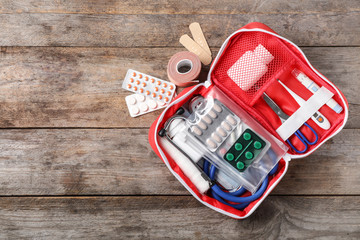
A military first aid kit might not be necessary for the average person, but those in dangerous professions or who engage in shooting sports might want to consider having one. They're also valuable if you enjoy outdoor activities that may lead you deep into the woods, like off-roading or hiking.
For people in Law Enforcement or the military, having these medical supplies easily accessible isn't just a no-brainer, it's a requirement. When the lives of you or your team are on the line, you need to be prepared.
But what about other folks? Unfortunately, we live in a time of unknowns and it seems that mass casualty events are no longer a once-in-a-decade type of scenario.
There are many benefits to having life-saving essentials in a pouch that you can carry with you on missions, during events, or in your car in case of emergency. These kits could be the difference between life and death for you, your family, or your loved ones when disaster strikes.
WHERE SHOULD YOU PLACE YOUR FIRST AID KIT?

Ensure that your first aid kit, whether it's a standard type or MFAK (Mini First Aid Kit), is conveniently accessible to everyone. In facilities or households, it should be easily reachable for all individuals. Remember to regularly stock it with essential supplies needed for emergencies.
For tactical missions or activities, it is crucial to carefully pack your kit with the necessary supplies before departure. Anticipate potential scenarios and prepare accordingly to provide prompt initial treatment.
If you're a regular civilian, consider having a first aid kit in your vehicle or at home, placing it where adults can easily access it. However, it's important to keep it out of the reach of children unless they are trained in its proper use.
PLACEMENT FOR TACTICAL UNITS
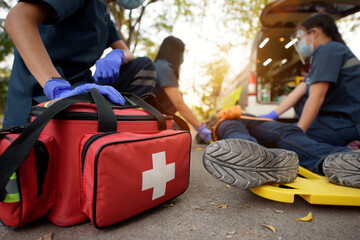
If you are in a tactical unit then an IFAK or AFAK may be standard-issued gear. If you are in the military or a strict uniform Law Enforcement professional, then you may be ordered to wear your kit in a certain location. However, in my experience, there is some flexibility in where you place your gear.
I encourage you to try different locations for your IFAK/AFAK, but only during training sessions. For example, I used to carry my IFAK on my vest. However, I had a couple of issues with this setup because it altered the mechanics of shouldering my long gun.
Secondly, it added too much bulk to my kit, which could complicate entries. After a couple of training scenarios at the range and close-quarters combat (CQC) training sessions, I decided to attach my kit to my battle belt.
THINGS TO REMEMBER FOR CARRYING AN IFAK
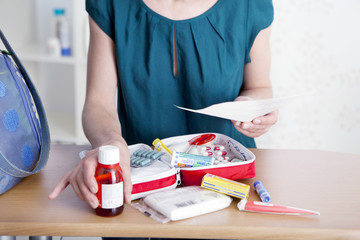
The IFAK (Individual First Aid Kit) you carry should be reserved for your personal use in the event of an injury. If a teammate is injured, locate and utilize their IFAK instead of depleting your own supplies. It's important to ensure that everyone has access to their own kit in case they become injured.
Position your IFAK where it can be easily reached by both hands. Many individuals, including myself, prefer to place the IFAK on the non-dominant side, just behind the pistol mag pouch. This allows for accessibility while maintaining focus on the target.
It's crucial to ensure that your IFAK does not hinder your movement or accessibility to other tools on your battle belt. Keep the kit compact and avoid having gear protruding to the side, which could make navigating tight spaces even more challenging.
Your IFAK should be easily accessible to you and others who may come to your aid. In my unit, we all wear our IFAKs on our battle belts, making it easy to identify and access the kit of a downed team member. Additionally, we each have MFAKs (Multiple Functional First Aid Kits) stored in our vehicles, with each MFAK consistently located in the same position in every trunk. This standardized placement ensures efficient retrieval in emergency situations.
BEST IFAK, AFAK OR MFAK TO HAVE
Choosing the ideal kit depends on your specific circumstances and requirements. While we cannot make that decision for you, we trust that the information provided has assisted you in identifying your potential needs and circumstances.
To explore a range of military first aid kits from reputable brands, we recommend browsing through Bulletproof Zone's collection. Additionally, we encourage you to conduct a comprehensive overview and comparison of various kits, examine the available items and refills, and make a purchase based on what best suits the situations you anticipate encountering.
You can browse through Bulletproof Zone’s military first aid kit collection from many trustworthy brands.
NORTH AMERICAN RESCUE SOLO (IFAK)
The NAR Solo Med Kit (IFAK) is a highly recommended individual first aid kit due to its outstanding features and reliable performance. Here's why it stands out:
-
Comprehensive Coverage: The kit provides solutions for minor to severe injuries, covering major trauma, bandages, wound care, splinting, eye care, personal protection, and more.
-
Compact and Lightweight: With its compact design and lightweight construction, it is easy to carry and won't add bulk to your gear.
-
Optimized Organization: Contents are thoughtfully arranged for quick and easy access during emergencies.
-
Emergency Treatment Solutions: The kit enables you to provide initial emergency treatment until professional medical care is available.
-
Trusted Brand: The NAR Solo Med Kit is produced by North American Rescue (NAR), a reputable brand known for high-quality medical equipment and supplies.
-
Ideal for Various Activities: Suitable for individual sports, backpacking, hiking, hunting, camping, adventure travel, and more.
-
Dimensions: L 5 in. x W 3.5 in. x H 7.5 in. with a weight of 1.35 lb.
For individuals involved in activities such as sports, backpacking, hiking, hunting, camping, or adventure travel, the NAR Solo Med Kit is an ideal choice. Its reliability, portability, and comprehensive coverage make it a top recommendation for those seeking a compact and capable IFAK.
COMBAT MEDICAL MOJO® MULTI-MISSION AID BAG
The Mojo® Multi-Mission Aid Bag is a versatile and comprehensive solution designed for medics operating in various mission scenarios. Here's why it stands out:
-
Two bags in one: main bag with 2,645 in³ of interior space for resupply or sustaining multiple casualties, and detachable low-profile assault bag with 595 in³ of interior space for trauma care.
-
Simplified tactical medicine: Designed based on real-life experiences of special operations medics, providing easy access to life-saving equipment.
-
Ample storage: Multiple module bags, bottom pouch, and over 3,200 in³ of total medical supply storage.
-
Systematic access and visualization: Ergonomic design evenly distributes weight, ensuring easy access to equipment.
-
Durable construction: Rugged nylon material for long-lasting use.
-
Mission configurable: Organize medical supplies based on operational needs.
The Combat Medical Mojo® Multi-Mission Aid Bag is a top choice for medics requiring a versatile and well-organized solution for providing care in the field.
Check out the Combat Medical Mojo® Multi-Mission Aid Bag
SPARTAN ADVANCED INDIVIDUAL FIRST AID KIT (AFAK)
The Spartan Armor Systems AFAK is an Advanced Individual First Aid Kit designed to address severe bleeding, airway, and respiratory issues. Key reasons to choose it:
-
Comprehensive contents: Includes combat tourniquet, rolled gauze, trauma dressing, vent compact chest seal, naso airway, EMT shears, rescue blanket, CCCC cards, and Sharpie marker.
-
Compact and efficient: Features 600D Compact IFAK Ripaway Pouch for quick access.
-
Suitable for LEO/MIL and civilian use: Recommended for law enforcement, military, and civilians.
The Spartan Armor Systems AFAK provides a compact and capable option for efficient first aid in critical situations.
AR500 ARMOR QUICK DETACHMENT IFAK (QD IFAK)
The AR500 Armor Quick Detachment IFAK is a versatile and user-friendly solution for immediate access to trauma components. Here's why it stands out:
-
Easy mounting and access: Front and side webbing with a Velcro® patch panel for quick attachment and tourniquet accessibility.
-
Efficient design: The pouch unfolds in stages, allowing rapid access to trauma supplies and creating an organized display.
-
Customizable and durable: Spaced and sized elastic sections accommodate a variety of medical and trauma supplies, and the 500D Cordura Nylon construction ensures durability.
-
Versatile attachment: Comes with two MALICE CLIPS® for easy MOLLE-compatible platform attachment.
The AR500 Armor Quick Detachment IFAK provides a reliable and adaptable option for immediate medical response in demanding situations.
Check out the AR500 Armor Quick Detachment IFAK
NORTH AMERICAN RESCUE FIRST RESPONDER MINI FIRST AID KIT
The North American Rescue First Responder Mini First Aid Kit (MFAK) is a compact and fully loaded IFAK designed to deliver critical care for traumatic injuries. Key features include:
-
Compact and versatile: The smallest platform available from North American Rescue, equipped with essential medical equipment.
-
Easy access and organization: Clamshell configuration with multiple elastic loops and clear tear-away pouches for secure gear storage.
-
Mounting options: MOLLE backing for vertical attachment and a 3-inch belt loop for horizontal mounting.
-
Treatment pack-out options: Basic, Basic with Combat Gauze, and Advanced versions to suit different needs.
The North American Rescue First Responder Mini First Aid Kit offers a compact and comprehensive solution for immediate critical care in high-stress situations.
Check out the North American Rescue First Responder Mini First Aid Kit
NORTH AMERICAN RESCUE MINI MEDIC FIRST AID BAG/KIT
The North American Rescue Mini Medic First Aid Bag/Kit is a compact trauma aid bag designed to provide essential medical equipment for treating multiple injuries. Notable features include:
-
Portable and adaptable: This kit includes crucial medical equipment for providing immediate treatment at the site of injuries.
-
External storage options: Two external pockets, tourniquet holders, and a drop-down pouch for additional attachments.
-
Expandable capacity: An expansion zipper allows for increased load capacity when needed.
-
MOLLE capability: Multiple MOLLE attachment points on the sides, bottom, and inside back of the bag.
-
Organized interior: Includes clear tear-away pouches, mesh pouches, and an internal pouch for efficient gear organization.
With its portable and adaptable design, the North American Rescue Mini Medic First Aid Bag/Kit is an ideal choice for effectively treating multiple casualties across various mission profiles.
Check out the North American Rescue Mini Medic First Aid Bag/Kit
For restocking or replacing equipment, check out items offered by SafeGuard Medical.
Frequently Asked Questions (FAQs):
Q: What are the differences between IFAK, AFAK, and MFAK?
A: IFAK (Individual First Aid Kit) is a basic medical kit designed for individuals to treat trauma events. AFAK (Advanced First Aid Kit) includes additional components and equipment for immediate medical treatment. MFAK (Multiple First Aid Kit) is a larger kit used on multiple people and is not attached to tactical gear.
Q: What is inside an IFAK, AFAK, and MFAK kit?
A: The contents of each kit vary, but commonly included items are tourniquets, bandages, trauma shears, chest seals, compression gauze, and other essential medical supplies.
Q: Do I need a military first aid kit?
A: While not necessary for the average person, those in dangerous professions, engage in shooting sports, or participate in outdoor activities may benefit from having a military first aid kit. In high-risk situations, these kits can be the difference between life and death.
Q: Where should I place my first aid kit?
A: For general use, place the first aid kit where it is easily accessible to all individuals, such as in a vehicle or at home. Tactical units may have specific guidelines on where to place the kit based on their equipment and mission requirements.
Q: Which is the best IFAK, AFAK, or MFAK to have?
A: The ideal kit depends on individual circumstances and requirements. It is recommended to conduct a comprehensive overview and comparison of various kits, considering factors such as the contents, size, weight, and brand reputation before making a purchase.
STAY PREPARED, EVERY SECOND COUNTS
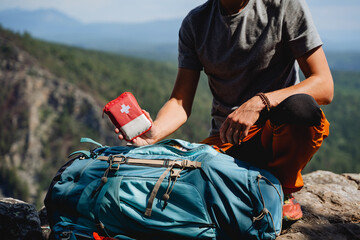
A properly packed tactical first aid kit, such as an Individual First Aid Kit (IFAK) or an Advanced First Aid Kit (AFAK), could be that one thing that will save you, or those you care about, from a life-threatening situation.
Having a tactical first aid kit is necessary as it can shorten the treatment time for emergency situations to be treated, which lowers the risk of complications and death. Prepare and place it strategically. Make sure it is accessible to both your hands and readily available for a responder to access in the event you need medical treatment. It pays to be prepared.
Have you ever faced an emergency situation? What do you recommend individuals have in their advance first aid kit? Everyone should have the proper resources, knowledge, and skills to survive critical situations. Please share your advice and experiences in the comments below!












